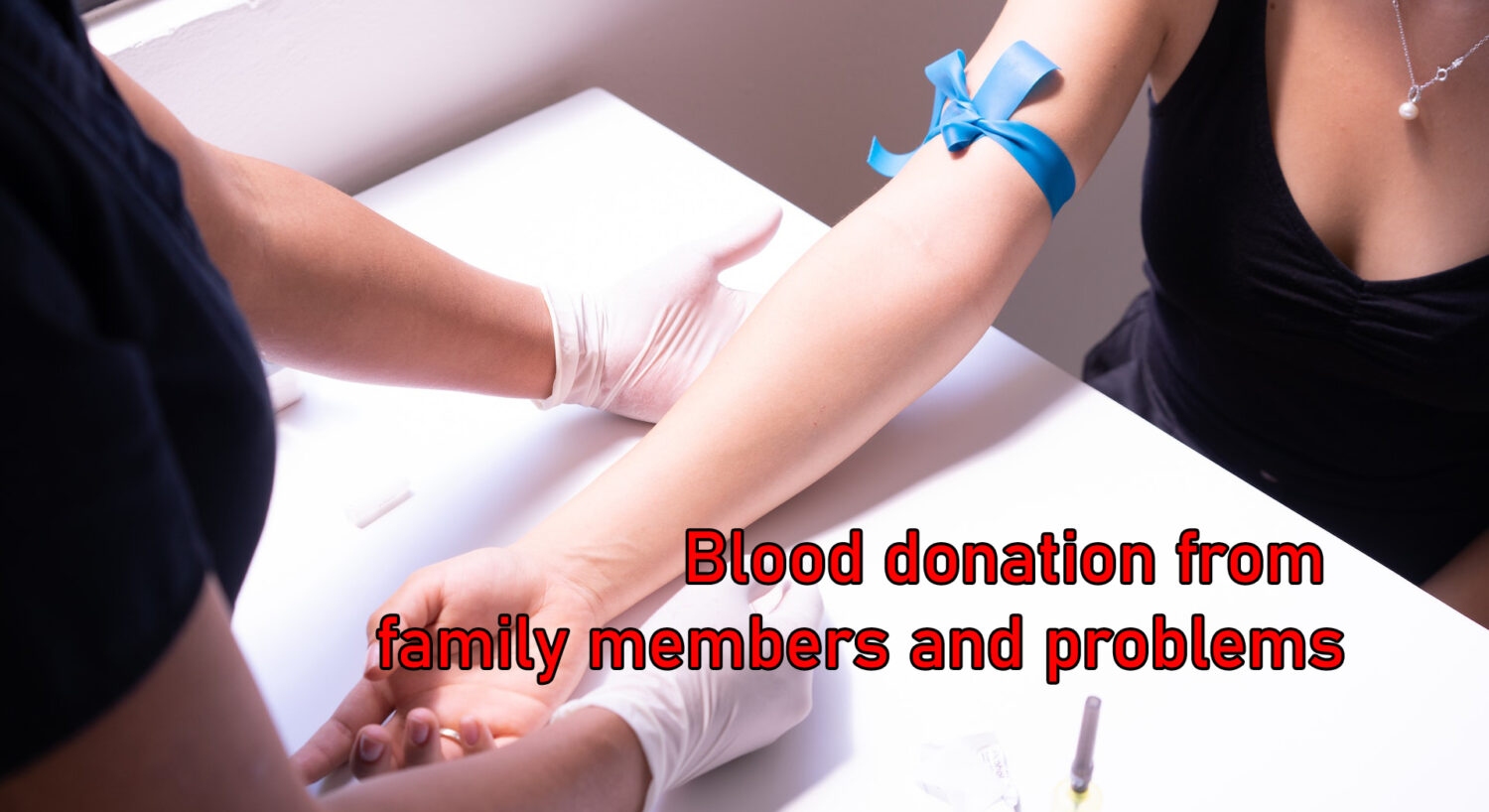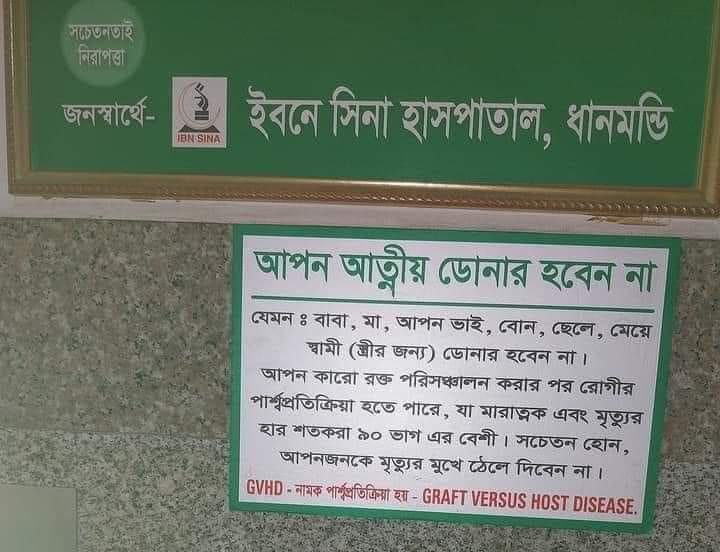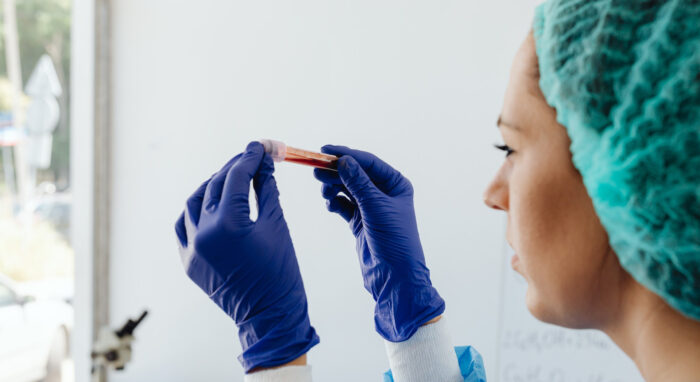
Blood donation from family members and problems
What can be the problem if someone takes blood from his family member?
This is a frequently asked and very important question about blood donation. If you want to hear the short answer, let’s say that taking blood from close relatives increases the possibility of spreading “Transfusion-associated graft versus host disease” (TA-GvHD). The process is a bit complicated but it can be explained quite simply.
When you take a packet of blood from a random donor, what you actually take is a packet full of red blood cells. Plasma, white blood cells, and platelets are removed as much as possible. Not completely eliminated, some amount remains in red blood cells and platelet packets. They pose a risk to the blood recipient and are sometimes life-threatening. Part of these risks comes from the donor’s white blood cells. Specifically from T-cells.
T-cells are the boss of our immune system. Another name for T-lymphocyte. This is the last line defense system but the most powerful like Manuel Noir. They understand which cell is outside our body. When our body receives blood from outside, the T-cells in the donor’s blood will enter the patient’s body and start fighting against his body because it does not recognize it.
Now you see, a car has entered without your knowledge. What happens if you don’t stop him as a defender? There will be a sudden goal on the football field. Just like that, when T-cells from donor blood are left unharmed, they multiply and destroy your body’s T-cells. It is called the “Graft versus host effect” where the graft is the blood given by the donor and the host is the patient. When it occurs during a blood transfusion, it is no longer called the same, but rather called “Transfusion-associated graft versus host disease” (TA-GvHD).

This can result in serious damage to our body defenses. In some special cases, such as chemotherapy or any other treatment or disease, taking blood will be adulterated because then the defense is already weak and the T cells of the donor’s blood take advantage of this opportunity. Once the donor’s T lymphocytes win, it’s game over. Suffer from TA-GvHD. No second leg means no option to recover.
Now you see, the person who takes blood also has T-cells in his body. And the number of T-cells in his body is much higher than the T-cells that come with donor blood. He will not leave the attacker! (Unless Maguire is a defender type! 🙂 ) What will he do? Catches the attacker with his defenses and renders him ineffective.
A simple question, there are 22 players in the field, how to divide it into 2 parts? With the jersey? Now imagine your attacker walking around with your jersey in your half. Would you consider him an attacker? Of course not!
This will happen when we take blood from a first-degree relative! The composition of their blood and our blood is almost the same. As a result, your defender T-cells in your body cannot recognize the attacker’s T-cells from the opposite side, i.e. the donor’s T-cells. If you do not recognize the question of blocking? The thing will be your team’s jersey wearing the opposing team’s attacker in your half and the opposing team’s goal before your defender can do anything! That is (TA-GvHD) will be!
So can’t we stop it? Of course, we can! Why not? See where the root of the incident is. Will the attacker actually score in your half? Therefore, if we give 25 Gy Gamma radiation to the packet from which we are taking blood, there is no more risk.
Now many people will say, we give blood to acquaintances, there is no problem. Why not? See, it’s not always the case that your defense can’t recognize the donor’s T cells! It will recognize but sometimes there is a chance of missing. And if there is cancer or AIDS or the body’s immune system is weak, there is no need to donate blood. It is better to take from a random donor. But must be cross-checked.
Now one more question may come up. When one person’s body blood is given to another person’s body, the other person’s DNA gets into the other person’s body. Then if the DNA in that person’s blood is tested, will there be a different result or will there be any problem with the result? The answer is, yes, taking someone else’s DNA comes in. While red blood cells do not contain DNA, white blood cells and platelets contain DNA, which is transported to the recipient’s body. But the amount of this DNA is very small, one in a million foreign DNA, so it is not possible to separate it by testing. And because WBCs and macrophages have a very short life span, they are destroyed within a short time, along with someone else’s DNA.
Related Posts

কেউ তার পরিবারের সদস্য থেকে রক্ত নিলে কি সমস্যা হতে পারে?
ব্লাড ডোনেশন সম্পর্কে এটা বহুল জিজ্ঞাসিত ও অত্যন্ত গুরত্বপূর্ন একটা প্রশ্ন। ছোট করে উত্তর শুনতেRead More

ফেবু মুমিনদের সহজ সরলতা, কুযুক্তি ও শেষে চাপাতির কোপ !
ফেসবুকীয় মুমিন মানেই ‘ছাগল” অন্যকথায় ছাগু (ফেসবুক আবার তাদের সম্মানার্থে ছাগু সরাসরি লিখলে গোস্বা করেRead More

ধর্মীয় অনুভূতির দোহাই দিয়ে বাংলাদেশে বিজ্ঞান শিক্ষার পশ্চাৎযাত্রা
বাংলাদেশে সাইন্সের স্টুডেন্টদের অবস্থা খুবই শোচনীয়। সারাবছর বিজ্ঞানের জাহাজ মাথায় নিয়ে ঘুরবে, কিন্তু বিশ্বাস করবেRead More

Comments are Closed